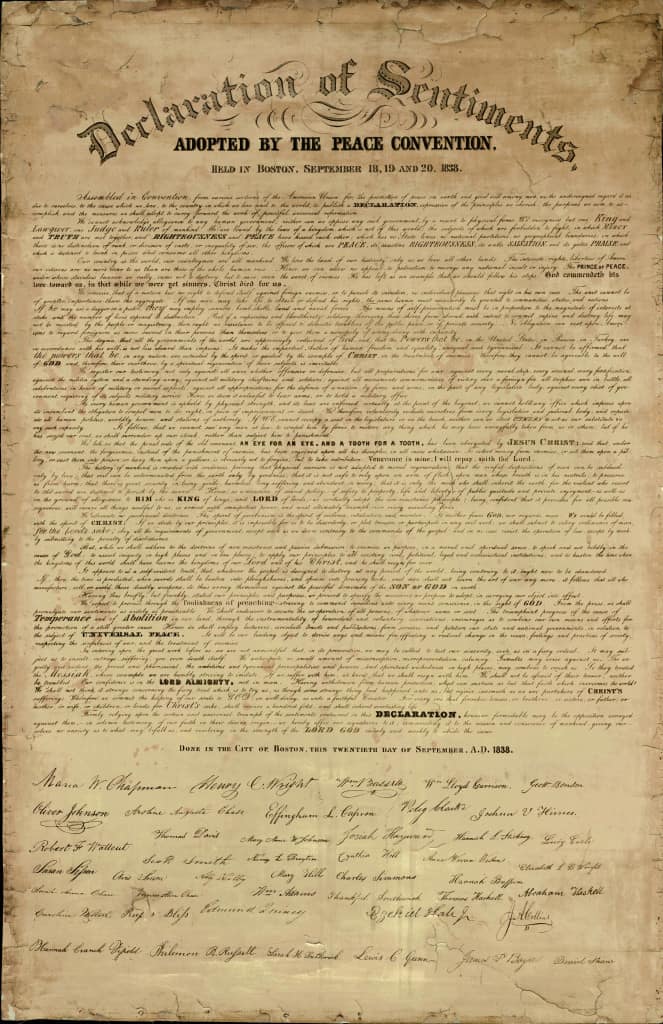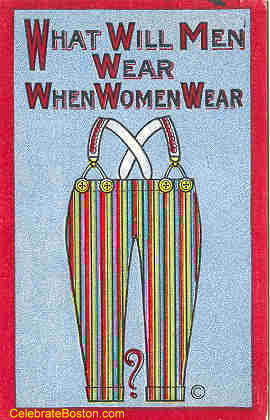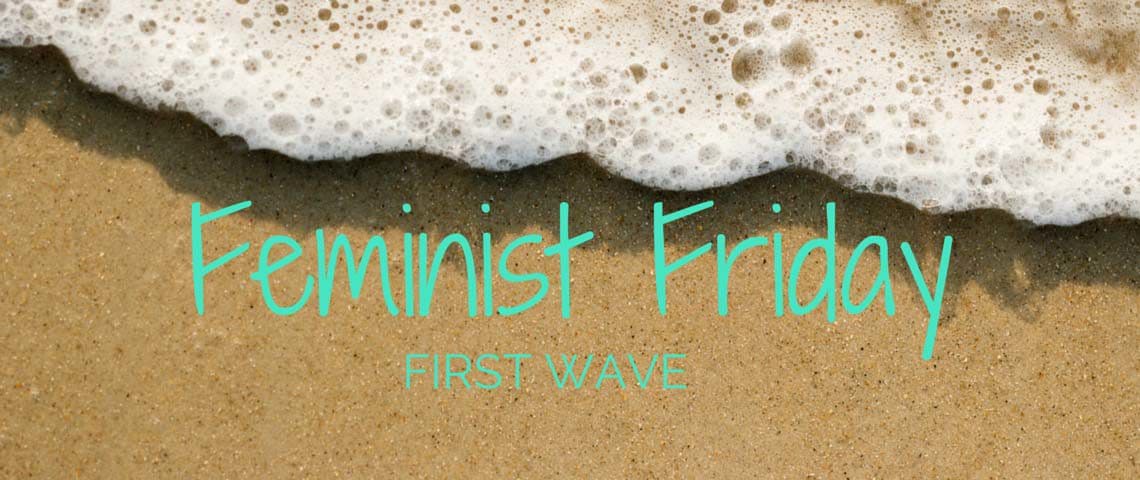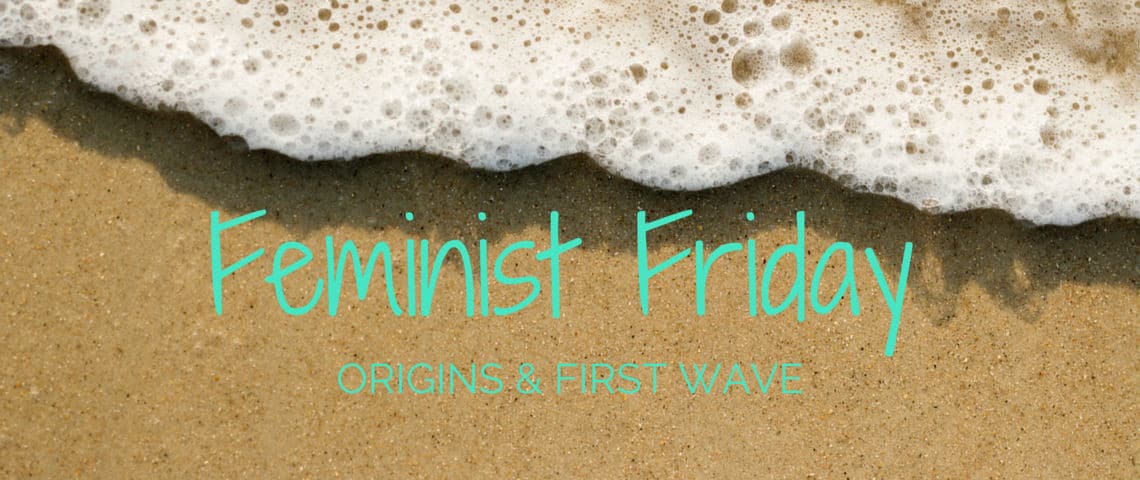This is the first in a series on feminism. Check out Second Wave, 3 Third World Feminists You Should Know, & Reflections on Faith, Feminism, & Identity.
The feminist agenda is not about equal rights for women. It is about a socialist, anti-family, political movement that encourages women to leave their husbands, kill their children, practice witchcraft, destroy capitalism, and become lesbians.”
– Pat Robertson
Washington Post, 23 August 1992
Christians don’t know very much about feminism. It’s one of our “knowledge blind spots”. This wouldn’t necessarily be a bad thing, except that today we find ourselves in the middle of a decades long debate on what the Bible says about a “woman’s place”. And for a group of people who hate when we ourselves are misrepresented in the media, we sure make a lot of public claims about this topic that we know so little about.
In my own journey, I became a Christian and an egalitarian before I had even grown into a woman. I didn’t learn about feminism until I was in graduate school. And, if I’m honest, I did so begrudgingly.
Learning about feminism turned out to be a powerful experience for me, one in which God taught me more than I ever could have expected. And the areas of my life that were affected the most were the very areas I thought feminism would never touch: my faith and my sense of self. But isn’t that just like God, to use the very thing we think God won’t use to teach us more than we thought possible?
Let’s dive in – and don’t be too surprised if you find yourself learning about more than just feminism.
Christian Origins of Feminism
For many people, the most surprising thing about feminism is that its roots go back to Christian women. That’s right, the first women to speak up for themselves and for other women did so because the Holy Spirit led them to.
This catches many Christians off guard because we are so often told that egalitarianism is a result of secular feminism infiltrating the Church. And while that is a very convenient argument for those who oppose egalitarian theology, it simply falls apart with one glance at history.
The equality of women is God’s truth that was taken into the public square, not a secular idea that infiltrated the Church.
Egalitarianism actually has a much longer history than feminism. Beginning in the early Church, emerging again in the reformation, and continuing on to the present day through the Wesleyan Holiness streams of the Church, egalitarianism is an old and rich theological tradition (one that is too big to recap here, but check out our Women in Church History series to learn more).
Surprisingly, secular feminists are more aware of this bit of Christian history than most Christians. In fact, feminist historians point back to women like Hildegard of Bingen, one of many women in the 11th century who were considered “unmarriageable” by their families and put away in convents, where they were taught to read and write. Hildegard used her education of the Bible to preach all over the German Empire at a time when only priests were allowed to teach the Gospel.
Many also point to Julian of Norwich from the 15th century who articulated a theology of the feminine side of God. Her words are inspiring;
Just because I am a woman, must I therefore believe that I must not tell you about the goodness of God?”
The Protestant Reformation led to more women than ever learning about the Bible, preaching the Gospel, and writing theology – in spite of the overarching patriarchy of the day. This religious inspiration led women to write on other topics and to speak in secular contexts on the equality of women. Some of the notable women from this era are Jane Anger, Aemilia Lanyer, Rachel Speght, and Margaret Fell.
And all of this laid the groundwork for women of the 19th Century to come together as a united movement for women’s civil rights.
First Wave of Feminism – The Right to Vote
It’s important to understand just how different life was for American women in the 1800s. Let’s remember that slavery was still in effect, keeping many women in America from having any legal rights at all. Although given more rights than slaves, free women still:
- were not legally allowed to own property
- were not legally allowed to vote
- did not have many opportunities to make a living outside their homes
- were held under “coverture” law which meant that husbands legally held authority over the person, property, and choices of their wives
- were not widely educated
Life looked very different for women in the 1800s than it does today, and this was the context in which first-wave feminism arose.
Despite these incredible restrictions, women led the charge in the Abolitionist Movement and the Temperance Movement. And while they were engaging in these public movements, they realized that they would be able to accomplish a lot more social change if they themselves had the right to vote.

First wave feminism is thought to have officially started in 1848, during the first women’s rights convention at Seneca Falls, New York. 300 women and men met in the basement of a Wesleyan Methodist church and signed Elizabeth Cady Stanton’s Declaration of Sentiments, publicly declaring their belief in the legal equality of women to men.
This convention officially kicked off the fight for women’s suffrage in America.
Some of the key leaders in this movement were Elizabeth Cady Stanton, Alice Paul, and Anna Howard Shaw. Many also point back to Mary Wollstonecraft‘s A Vindication of the Rights of Woman (1792) as pivotal in starting the movement. And while the majority of suffragettes were white and middle-class, the movement was also powerfully led by black women abolitionists like Sojourner Truth, Mary Church Terrell, Frances E.W. Harper, Ida B. Wells, and Maria Stewart.
Sadly, this does not mean that the movement was free of racism. The country was very divided on who should have the right to vote. Black men won the vote in 1870, enraging some suffragettes and pleasing others. And due to the racial tensions, especially in the South, many questioned whether women’s suffrage should include black women at all.
Women voting was indeed a highly controversial topic, and women faced immense public ridicule and harassment for their fight. Many opponents claimed that voting was a man’s “role” in society and that suffragettes were simply trying to be men.

The pivotal turning point came in 1917, when the US sided with the Allied Forces and entered WWI. America was a country birthed from the rhetoric of liberty, and President Woodrow Wilson did not fall short in using this rhetoric to gain public and congressional support for the war against Germany and the Central Powers:
We are glad…to fight thus for the ultimate peace of the world and for the liberation of its peoples…for the rights of nations great and small and the privilege of men everywhere to choose their way of life and of obedience. The world must be made safe for democracy. Its peace must be planted upon the tested foundations of political liberty.”
– President Wilson, 1917
The language of political liberty and democracy surrounding the war gave suffragettes an opportunity. The National Women’s Party began picketing and holding hunger strikes in front of the White House, making a mockery of Wilson’s claim of “American liberty”. How can a country claim to fight for liberty abroad when liberty is lacking at home?

Things quickly became ugly. Picketers were arrested and dragged away. In prison they were treated cruelly, denied medical attention, refused visitors, and forcibly fed. This all culminated in the “Night of Terror” on November 14, 1917 when police violently detained and arrested 33 protestors in front of the White House. Photos of police brutality covered the newspapers and the public was outraged!
The argument against women’s suffrage took its final blow in 1918 when Germany – America’s “enemy of liberty”- granted women the right to vote. This seriously called into question America’s credentials as the “land of the free”.
It took another two years, but public opinion grew and women finally won the vote in 1920 with the ratification of the 19th Amendment to the US Constitution.
Although the 19th Amendment was a significant victory for women in America, the fight for voting rights was far from over. The states would continue to fight with the federal government about who the 15th and 19th Amendments would be extended to. It wouldn’t be until the 1960s that all citizens of the U.S. would be legally allowed to cast a ballot, without restriction due to race or gender.
Join us next Friday to learn about Faith, Feminism, and Identity!
—————————————-
General Note – My focus on American feminism in this post reflects the context of my own studies on the topic. I apologize for the lack of information on other feminist movements.
Here are a few academic resources on the topic of women’s suffrage:
1. History of Woman Suffrage Volumes One & Two
2. Through Women’s Eyes
3. Women’s America
4. One Woman, One Vote book & PBS documentary
And here are a few resources that are a bit more fun:
1. Feminism A Very Short Introduction
2. TEDx’s reenactment of Sojourner Truth’s “Ain’t I A Woman?”
3. This “Crash Course on Women in the 19th Century”
4. This “Crash Course on Women’s Suffrage”
5. A timeline of women’s suffrage by country





27 responses to “Origins & First Wave Feminism”
Kate, I was so excited when I saw this article! It was so informative–it’s nice to have all of this history in one place, along with how it regards to the Christian world. You may not remember, but I actually emailed you several months ago asking about “how to be a Christian feminist in day-to-day life.” You got back to me with advice, encouragement and key books to read on the subject. Then you said that Junia Project would be writing more specifically on feminism in the days to come… I am so glad to see it happening. This article was a huge encouragement to me. It reaffirmed my beliefs on feminism in the Church and secular world. Though my beliefs seem like a no-brainer to me, my Southern-Baptist-rooted church, though beloved, unfortunately holds traditional views of women, so it’s nice to feel a sense of understanding and community here. Keep up the good work!
Hey, Kate and Gail and others who read this post. I love what you are saying, doing, writing! I fall between the chairs in these discussions, too feminist for conservative Christians, too Christian for radical feminists. We need more understanding of how Jesus is “good news” for women and how women have sought to hear and obey His voice, sometimes at great cost! BTW: Did anyone see the recent CT article on Hannah More? I am inspired by Catherine Booth as well, who wrote some fabulous sermons on women and spiritual gifts. Just saying . . .
Thanks, Emily! I saw the excellent article on Hannah More and would love to read the book on hear as well. And Catherine Booth is one of my heroes 🙂 Thanks for the reminder that these stories are important.
I would never have called myself a feminist until the last 2 or 3 years. I didn’t know that’s what I was. I have been so enculturised into a flawed picture of women and men in the Church that I followed (awkwardly) the old, false tenets for years .. not living them, but trying desperately to make them fit. Great article, Kate, as always.
Thank you for this. I must admit, though, that as I read your own story about how you grudgingly studied this first phase of feminism, it brought back so much anger because you are correct, most Christians have been not only ignorant of this very important history, but arrogant in their dismissiveness of it. I still see this same ignorance and arrogance today all the time, even in 2015! Makes my blood boil. .. I know, I know, one more thing to take to Jesus for His touch. . .. but, Christians can be SO clueless. These brave justice-seeking women gave everything they had to simply live out Jesus’ point of view! Thanks again for the reminder. Maybe more Believers can become Women Studies majors along with their theology majors and bring enlightenment to the Church!! The PBS documentary One Woman, One Vote is a gem; a quick course that will deeply affect you. Also, Turner Classic Movies has a series as well.
Kate- great job! Growing up in Chicago, Jane Addams was another forerunning woman leader. Looking forward to upcoming posts … and I plan to review all your posts with our grandkids (granddaughters and grandsons-:)-
Tim, that is so fun! Thanks for letting me know!
This was a great post! And like many others am looking forward to reading what you have to say each week in this series. I paused partway through to read the “Declarations of Sentiments” and was stunned to read how many of their complaints from 1848 are still difficulties women face today in the church.
Yet at the same time I am so encouraged to be part of this long road that women have walked and hope to be able to keep the movement going in some small way. And I am so blessed that you all at the Junia Project are pressing on in this work!
I was very struck by this sentence “Many opponents claimed that voting was a man’s “role” in society…” Hmm… Where have I heard the idea of men and women having set “roles” before? (Read with irony) Clearly the current Complementarians have a long history as well. (I know it goes back much further than this.)
Merrell, I too love the Declaration. It is so powerful!
Hurrah for Feminist Friday! I love the way you reflect on key areas of intersectionality within the egalitarian movement.Thanks for a great piece on first wave of feminists. It was wonderful to reflect on their wise leverage of political allies, be they ever so non-conventional. Onward and upward!
Thanks Mimi! I wanted to talk with you about egalitarian history. I’d love to read through whatever you have written on the topic!
“The equality of women is God’s truth that was taken into the public square, not a secular idea that infiltrated the Church.” – Nicely put, Kate That’s a fact that would surprise a lot of people who agree with Pat Robertson in that quote at the top of the page.
I think education is the key. It’s hard to believe those myths about feminism when you know the history behind it! Thanks Tim 🙂
Kate, this is an excellent overview of first wave feminism. Thanks for all the terrific links for further research!
Thank you Dawn!
I respect your site but I am truly tired of all Christians being lumped together, painted with the same brush, when in reality, we are so very different. I, and many of my friends, are both fully Christian and fully feminists. And we are surely not alone. Please keep that in mind when you are using the term “Christian”. And keep up the good work.
Good point, Linda. I think that in general the public sees Christians as anti-feminist for the most part, which is what I assumed Kate was referring to. And it is probably the area we live in (Southern California is sometimes called “the Bible belt of the West”, believe it or not – a pushback against the more liberal culture, maybe?) but most of my Christian friends don’t know this history. You are fortunate!
I am so excited about this topic! Thank you for the time and research put into this. I am so offended when I hear Christians blame feminism for the collapse of society. I never hear them discuss the conditions in which feminism arose. They never seem to discuss injustice, abuse, or the lack of rights experienced by women. They fail to mention Christian champions who fought for the humanity and dignity of women. And yes, these people were led by God to be a voice in their day, just as you even a voice now! Thank you & God Bless
Thank you Leah! I completely agree!
Great article, Kate. As I am sure you know, these women were inspired by the radical way Jesus treated women given the culture of his day – talking to a Samaritan woman at the well was radical enough, along with the fact that she was unmarried and cohabitating with someone, but he engaged her in a theological discussion and perhaps she became the first Samaritan missionary.
What a great reminder Patti!
Thrilled about this important work you’re doing and congrats on the initial post in this series. So important to blend and merge our faith with what academia, especially history and science, can teach us and reinforce our Biblical understandings. Great historical overview and thankful you acknowledged the racism present in the movement at that time. Well done and excited to follow along for the future posts in the series!
Thanks for the encouragement Adrienne!